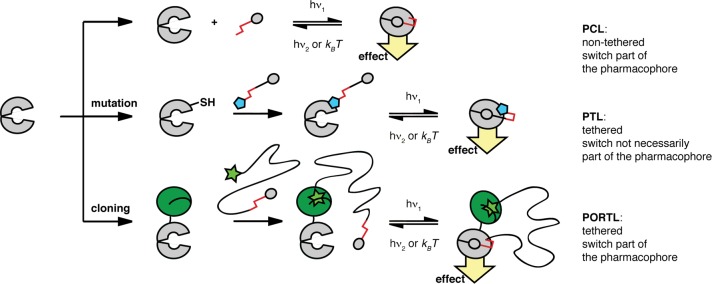
Orthogonal optical control of a G protein-coupled receptor with a SNAP-tethered photochromic ligand
Abstract
The covalent attachment of synthetic photoswitches is a general approach to impart light sensitivity onto native receptors. It mimics the logic of natural photoreceptors and significantly expands the reach of optogenetics. Here we describe a novel photoswitch design-the photoswitchable orthogonal remotely tethered ligand (PORTL)-that combines the genetically encoded SNAP-tag with photochromic ligands connected to a benzylguanine via a long flexible linker. We use the method to convert the G protein-coupled receptor mGluR2, a metabotropic glutamate receptor, into a photoreceptor (SNAG-mGluR2) that provides efficient optical control over the neuronal functions of mGluR2: presynaptic inhibition and control of excitability. The PORTL approach enables multiplexed optical control of different native receptors using distinct bioconjugation methods. It should be broadly applicable since SNAP-tags have proven to be reliable, many SNAP-tagged receptors are already available, and photochromic ligands on a long leash are readily designed and synthesized.